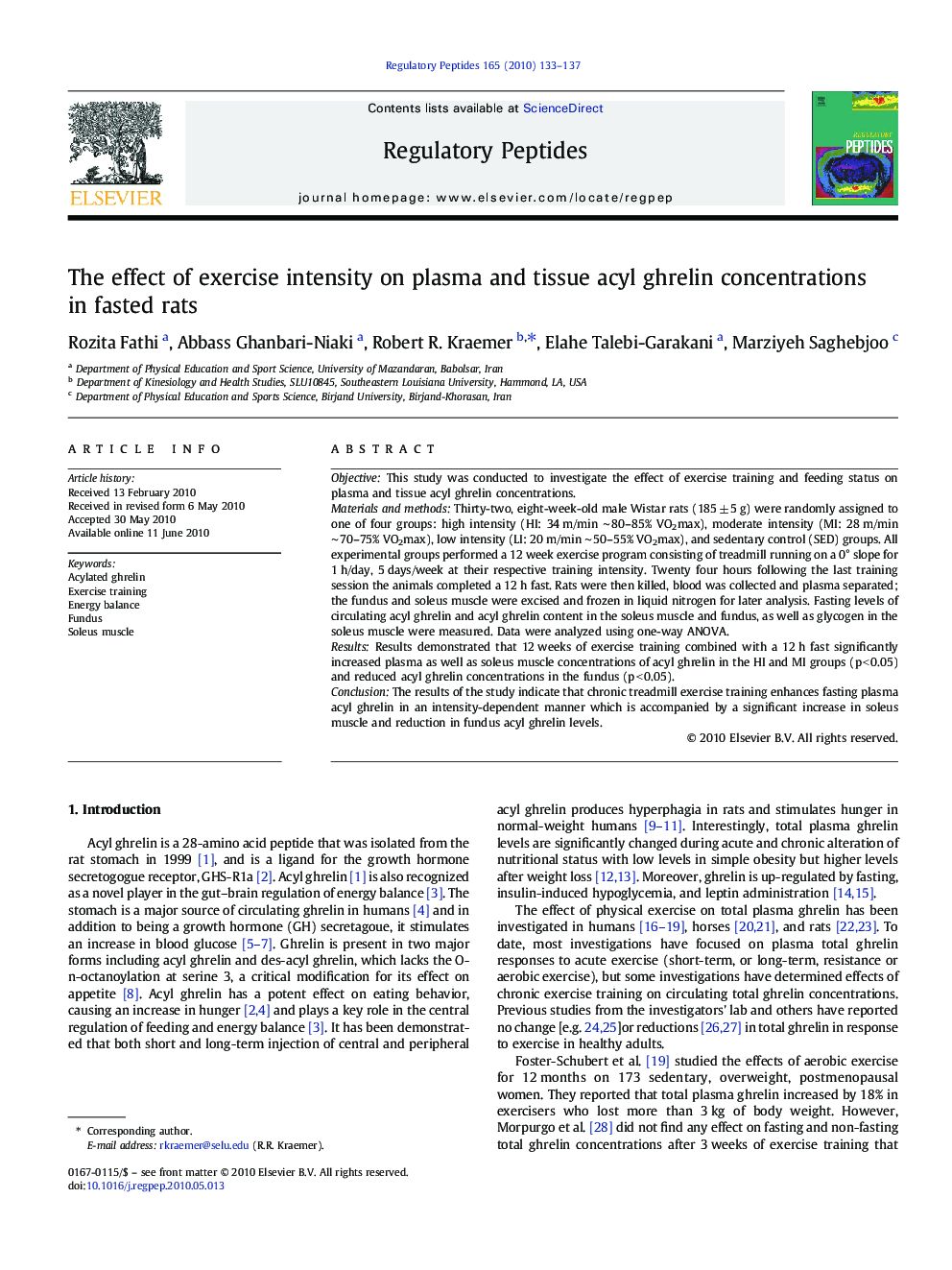| Article ID | Journal | Published Year | Pages | File Type |
|---|---|---|---|---|
| 2022666 | Regulatory Peptides | 2010 | 5 Pages |
ObjectiveThis study was conducted to investigate the effect of exercise training and feeding status on plasma and tissue acyl ghrelin concentrations.Materials and methodsThirty-two, eight-week-old male Wistar rats (185 ± 5 g) were randomly assigned to one of four groups: high intensity (HI: 34 m/min ∼ 80–85% VO2max), moderate intensity (MI: 28 m/min ∼ 70–75% VO2max), low intensity (LI: 20 m/min ∼ 50–55% VO2max), and sedentary control (SED) groups. All experimental groups performed a 12 week exercise program consisting of treadmill running on a 0° slope for 1 h/day, 5 days/week at their respective training intensity. Twenty four hours following the last training session the animals completed a 12 h fast. Rats were then killed, blood was collected and plasma separated; the fundus and soleus muscle were excised and frozen in liquid nitrogen for later analysis. Fasting levels of circulating acyl ghrelin and acyl ghrelin content in the soleus muscle and fundus, as well as glycogen in the soleus muscle were measured. Data were analyzed using one-way ANOVA.ResultsResults demonstrated that 12 weeks of exercise training combined with a 12 h fast significantly increased plasma as well as soleus muscle concentrations of acyl ghrelin in the HI and MI groups (p < 0.05) and reduced acyl ghrelin concentrations in the fundus (p < 0.05).ConclusionThe results of the study indicate that chronic treadmill exercise training enhances fasting plasma acyl ghrelin in an intensity-dependent manner which is accompanied by a significant increase in soleus muscle and reduction in fundus acyl ghrelin levels.
